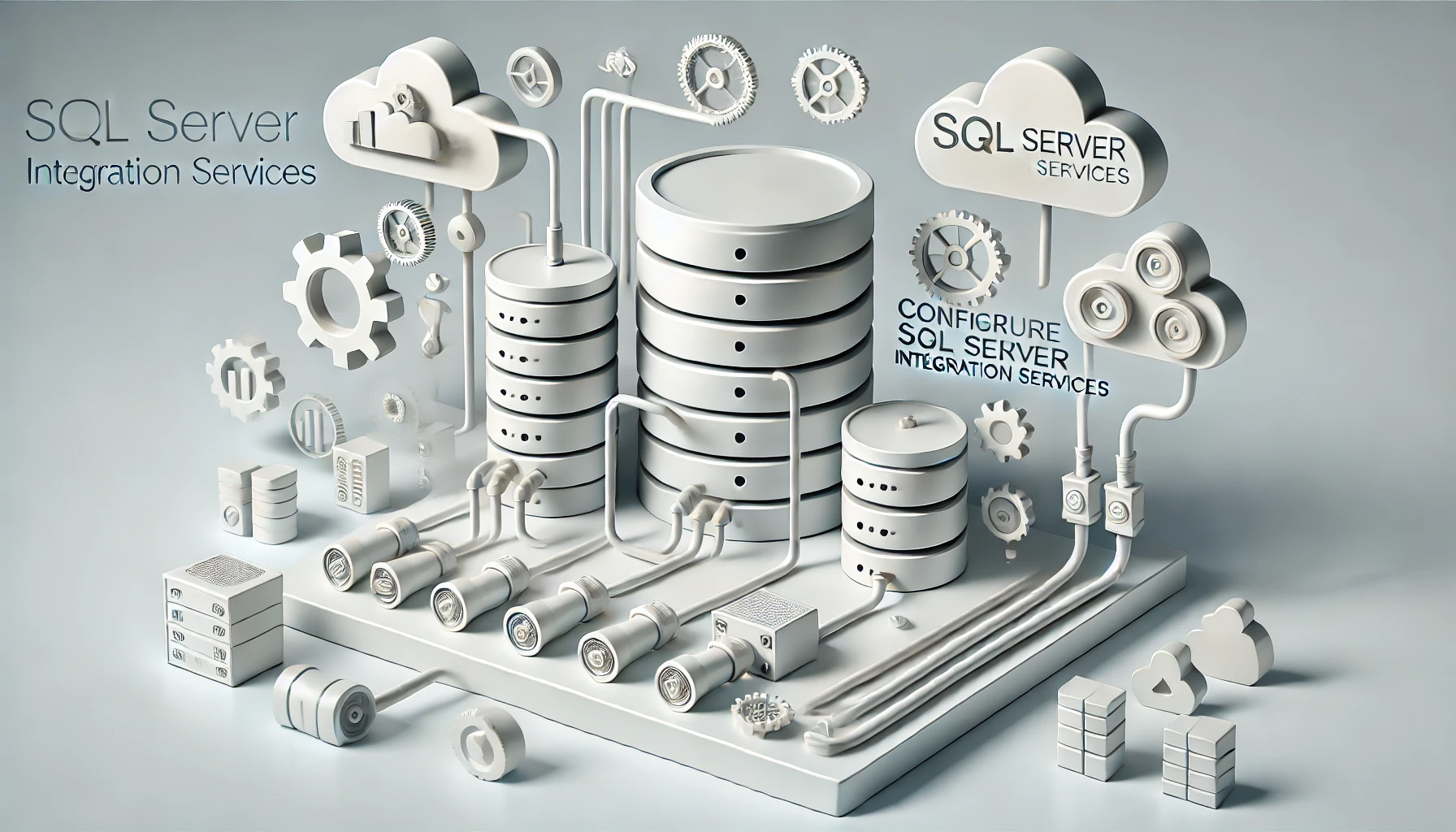Embarking on the journey to implement data warehousing with SQL Server Integration may seem like scaling a mountain, but fear not, for the view from the top is worth the climb. By following a structured approach of identifying data sources, crafting a solid data model, and configuring SQL Server with precision, you are laying the groundwork for a robust data warehousing solution. But what comes next is where the real magic happens – the intricate dance of setting up Integration Services and designing ETL processes. Stay tuned to unravel the secrets of seamless data integration and maintenance within your SQL Server environment.
Identify Data Sources
When embarking on the journey of implementing data warehousing with SQL Server Integration, the crucial first step is to identify the data sources that will fuel your warehouse. Data validation is a critical aspect of this process to ensure that the information extracted from these sources is accurate, complete, and consistent.
To begin, start by conducting a thorough source mapping exercise. Map out all potential data sources within your organization, such as databases, spreadsheets, CRM systems, or any other repositories where valuable information resides. Identify the specific tables, fields, and columns that are relevant to your data warehousing objectives.
Once you have mapped out these sources, perform data validation checks to assess the quality of the data. This includes verifying data integrity, consistency, and conformity with defined standards. By rigorously validating the data from your identified sources, you can ensure the reliability and effectiveness of your data warehouse.
Create Data Model
After identifying the data sources that will feed your data warehouse, the next step in implementing data warehousing with SQL Server Integration is to create a data model. This crucial step involves defining the structure of your data warehouse by establishing entity relationships and utilizing dimensional modeling techniques.
Entity relationships refer to how different entities, such as customers, products, and transactions, are connected within the data model. Understanding these relationships is essential for designing an effective data warehouse that accurately represents the business processes and objectives.
Dimensional modeling, on the other hand, focuses on organizing data into dimensions and facts to facilitate efficient querying and analysis. Dimensions represent the descriptive attributes of business data, while facts contain the numerical measures. By employing dimensional modeling, you can create a schema that is optimized for reporting and analytics.
Install SQL Server
The successful implementation of a data warehousing system with SQL Server Integration begins with the crucial step of installing SQL Server. When installing SQL Server, it is essential to carefully consider the server configuration to ensure optimal performance and scalability. Make sure to allocate the appropriate resources such as CPU, memory, and storage based on the expected workload and data volume to achieve efficient operation.
During the installation process, pay close attention to the database setup. Create databases with the correct collation settings to support the data you will be working with. Set up the necessary security permissions and user roles to control access and protect sensitive information. Consider enabling features like Transparent Data Encryption (TDE) for enhanced data security.
Setup Integration Services
To effectively implement a data warehousing system with SQL Server Integration, the next critical step is setting up Integration Services. Integration Services, commonly known as SSIS, is a powerful ETL (Extract, Transform, Load) tool that enables you to extract data from various sources, transform it according to business requirements, and load it into the data warehouse.
When setting up Integration Services, it is crucial to focus on data validation to ensure that the data being transferred is accurate, consistent, and meets the defined quality standards. Implementing robust data validation processes will help in maintaining the integrity of the data warehouse.
Additionally, error handling is another key aspect to consider during the setup of Integration Services. By establishing effective error handling mechanisms, you can identify and resolve any issues that arise during the ETL process. Proper error handling ensures that data integrity is maintained and that any errors are logged and reported for timely resolution.
Design ETL Process
Now, let’s focus on designing the ETL process for your data warehousing project. You will explore ETL workflow design, which involves mapping out how data will be extracted, transformed, and loaded into the data warehouse. Additionally, we will delve into various data transformation strategies to ensure the data is cleansed, standardized, and ready for analysis.
ETL Workflow Design
Designing the ETL workflow is a critical aspect of any data warehousing project. When approaching this task, start by carefully considering the ETL tool selection. Choose a tool that aligns with your project requirements, ensuring it supports automation options to streamline the data extraction, transformation, and loading processes efficiently. To enhance performance optimization, implement best practices such as parallel processing, incremental loading, and data partitioning. Error handling techniques are vital to maintain data integrity; incorporate mechanisms like logging, exception handling, and data validation to manage and rectify errors promptly.
Additionally, when designing the ETL workflow, focus on creating a structured process flow that encompasses data extraction, transformation, and loading stages. Define clear dependencies between tasks and establish checkpoints to monitor the workflow progress effectively. By structuring the ETL workflow thoughtfully and leveraging the right tools and techniques, you can ensure a robust and efficient data warehousing solution.
Data Transformation Strategies
Considering the importance of ETL workflow design in your data warehousing project, the focus now shifts to Data Transformation Strategies as part of designing the ETL process. Data cleansing plays a crucial role in ensuring that the data being moved into the data warehouse is accurate, consistent, and free of errors. This involves identifying and correcting any inconsistencies, duplicates, or missing values in the data before loading it into the warehouse. Data enrichment, on the other hand, enhances the data by adding relevant information from external sources to provide more context and value.
When designing your ETL process, it is essential to establish robust data cleansing procedures to maintain data integrity throughout the transformation. Additionally, incorporating data enrichment techniques will help enrich your data with additional insights, improving the overall quality and usability of the data in your data warehouse. By carefully planning and implementing these data transformation strategies, you can ensure that your data warehouse contains high-quality, reliable data for effective decision-making and analysis.
Create Data Warehouse
To initiate the process of creating a data warehouse, begin by defining the scope and objectives of the project. This step sets the foundation for a successful implementation. Next, focus on data aggregation, which involves gathering data from various sources and consolidating it into the data warehouse. This ensures that all relevant information is available for analysis.
After data aggregation, move on to dimensional modeling. This technique organizes data in a way that is optimized for querying and reporting. It involves creating dimensions (categories by which data is analyzed) and facts (measurable data points) to provide a clear structure for data analysis.
To further enhance the data warehouse creation process, consider implementing data quality checks. These checks ensure that the data being loaded into the warehouse is accurate, consistent, and reliable. Lastly, establish a data governance framework to maintain data integrity and compliance with regulations.
- Define scope and objectives
- Data aggregation
- Dimensional modeling
- Implement data quality checks
Frequently Asked Questions
How Do I Ensure Data Quality and Consistency in the Data Warehouse?
To ensure data quality and consistency in your data warehouse, start by performing data profiling to identify issues. Then, establish master data management processes for maintaining accurate and reliable information. These steps are crucial for a successful data warehouse.
What Are the Best Practices for Data Governance in a Data Warehouse?
Unlock the treasure trove of insights by upholding data governance in your data warehouse. Safeguard integrity with meticulous metadata management and trace the origins with robust data lineage practices. Secure your data kingdom with these best practices.
How Can I Optimize Query Performance in SQL Server Integration?
To optimize query performance in SQL Server Integration, focus on index optimization and query tuning. Identify slow queries, analyze execution plans, create appropriate indexes, and consider query rewriting. Implement these strategies for efficient data retrieval.
What Security Measures Should Be Implemented to Protect Data in the Warehouse?
To secure data in the warehouse, implement data encryption to safeguard information at rest and in transit. Utilize access control mechanisms to restrict unauthorized entry. These measures fortify the data against breaches and ensure confidentiality.
How Do I Handle Incremental Data Loading in the ETL Process?
When handling incremental data loading in ETL, leverage change tracking and delta processing techniques. Ensure only new or changed data is processed to minimize load times and optimize efficiency in your data warehouse operations.


